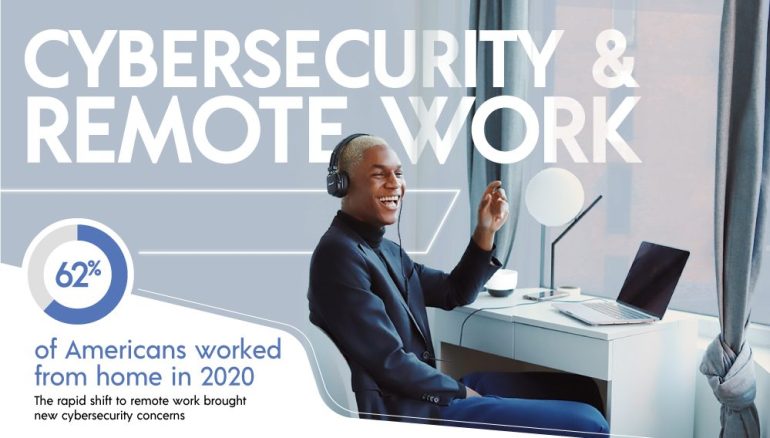When was the last time you set foot into your company headquarters? If you’re like many post-pandemic Americans, it’s possible it’s been quite a while. Twenty-twenty threw us all into a tailspin and, in many ways, we are all so very ready to get off this crazy ride. Yet, we can’t honestly say that every change brought on by COVID has been negative (just the overwhelming majority, but who’s counting?)
One of the most affecting changes to come from the pandemic is the sudden rise in employees working remotely. The vast majority of employees are happy with this change, as it is one that many have rooted for for the past several years anyway. Employers are also finding that this has its positives as it is actually saving the company money in a few areas. However, there are new challenges to arise from this turn of events. One such challenge is the issue of cybersecurity in remote work. Unfortunately, as employees are now outside the security threshold of their company’s home offices, they and their employers are both suffering from an enormous increase in cyber attacks. In fact, in early 2020, the FBI reported a 300% increase in cybercrime. Not only that, but attacks targeting remote workers increased 5x in the first month and a half of lockdown and 20% of companies experienced cyberattacks that could be linked back to remote workers.
Cyberattacks skyrocketed in 2020, with the top attacks being phishing (+600%), ransomware (+148%), malware activity (+128%), botnet traffic (+29%), and attacks on IOT devices (+13%). As 49% of all employees began working remotely for the first time ever, 20% received not tips or training on work-from-home security, although 75% of employees do follow security guidelines given by their employers. The most popular at-home cybersecurity tips are to be wary of suspicious emails, attachments, and pop-ups; to ensure antivirus software is activated; and to keep software patched and up to date. Fifty-six employees use their personal devices for remote work, but 25% don’t know what security protocols are on those devices and more than 1 in 4 employees use spotty Wi-Fi, furthering their security risks.
Although 60% of US employers have implemented MFA, 67% of companies have still experienced a security breach. While MFAs seem like a plausible solution, they’re actually too easy to hack. The reason for this is that passwords can be easy guessed or harvested from a breach; security questions can often be guessed based on social media; and one-time-codes sent by SMS, can be easily intercepted by hackers. Other MFA security measures may slow a hacker down, but it doesn’t protect data.
The real solution is passwordless security, such as the security offered by Beyond Identity. This kind of security completely eliminates passwords, and hackers can hack what isn’t there. Beyond Identity ask has a risk-based authorization, meaning every user and every device is checked for risks. The secure, frictionless login means there are no out-of-band messages that hackers could intercept.
Remote work is here to stay. It’s time for businesses to embrace the best security solutions to keep their organizations moving forward securely.

